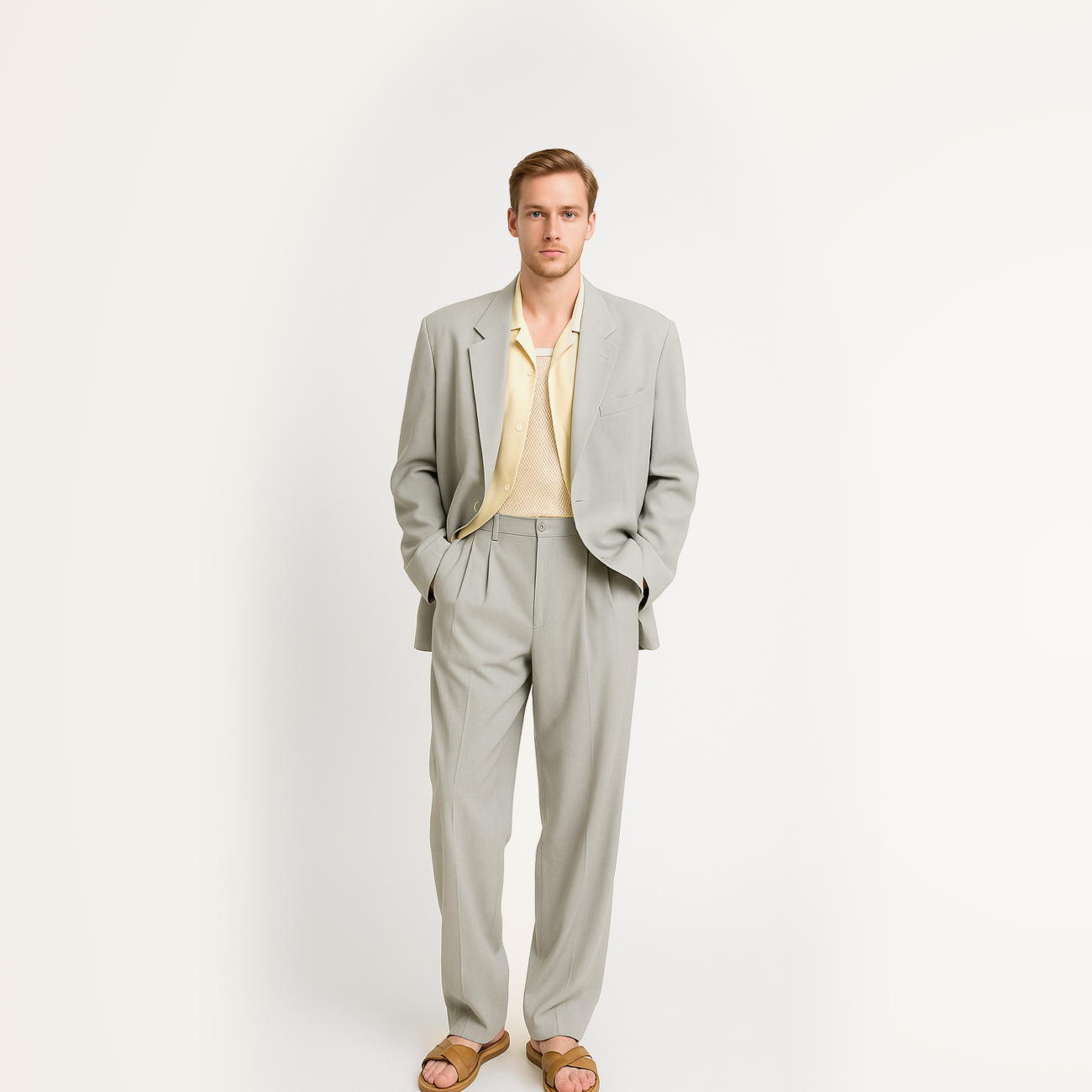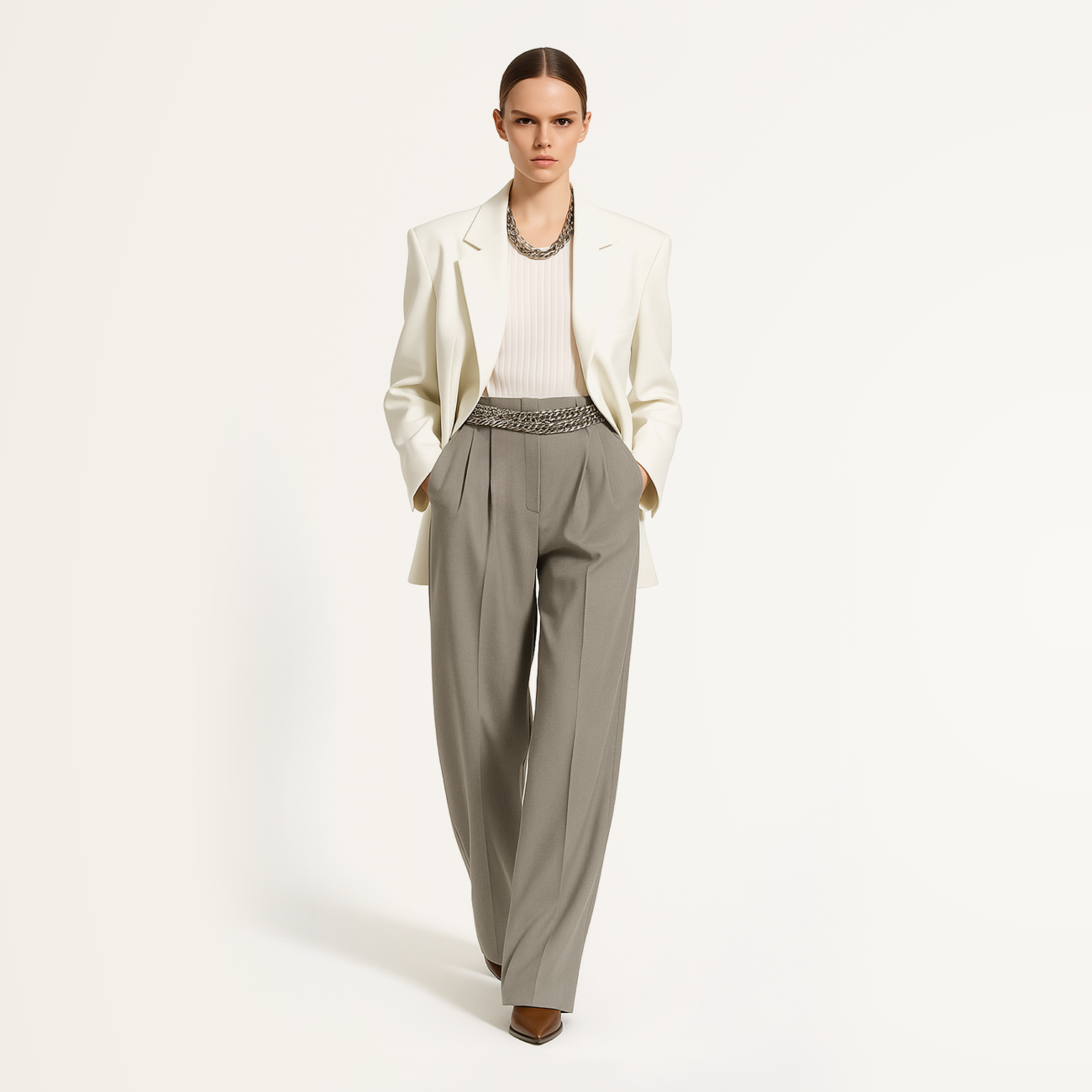Urban-chic
Urban chic blends the comfort and practicality of city style with a touch of refinement and luxury. It strikes the perfect balance between everyday functionality and elegance, offering a polished yet effortless look.
This style is tailored for metropolitan dwellers with a dynamic lifestyle, who need a versatile wardrobe that can seamlessly transition from business meetings to cultural events or a casual evening stroll. Urban chic is about looking sophisticated without sacrificing comfort—always smart, sleek, and ready for the pace of city life.
History
Urban chic began to take shape in the late 20th century, as urbanization and the fast-paced life of major cities created a need for a versatile and adaptable style.
In the late 1970s and 1980s, the world experienced a new wave of urban migration. Millions moved into big cities, where life became increasingly dynamic and demanding. It was during this time that the first signs of what would later be called urban chic began to emerge—a fusion of classic elegance and everyday wear, blending refined pieces with comfort and functionality. The core principle was simple: clothing that looked polished but didn’t restrict movement, favored neutral tones, and suited everything from work meetings to navigating city life.
In the 1990s, urban chic took on a minimalist edge, focusing on neutral color palettes and clean silhouettes. High-quality materials and simplicity in design made the style especially attractive to those with active, on-the-go lifestyles.
By the 2000s, fashion brands embraced the aesthetic, releasing streamlined, premium collections and promoting the idea of investment dressing—choosing timeless, durable pieces over fast fashion trends.
Since the 2010s, urban chic has evolved further under the influence of sustainable fashion and conscious consumption, with a growing focus on eco-friendly materials and long-lasting design. In the era of digital culture, it has also become more personalized and flexible, combining classic urban polish with elements of individual style, making it the perfect choice for modern metropolitan living.
Signature elements of the style
Color palette
TThe color palette can be varied. Urban chic relies on a neutral and refined color scheme as its foundation: black, white, gray, beige, complemented by rich tones like burgundy, deep navy, and emerald green. These colors create an elegant, understated aesthetic that highlights the person rather than overpowering them.
Prints
Prints play a minimal role in urban chic. When used, they tend to be subtle and classic, such as stripes, checks, or textural weaves. Abstract or geometric patterns may appear for variety, but always in a restrained, low-contrast way that maintains the overall polish of the look.
Textures
Urban chic emphasizes quality materials with a tactile appeal. Frequently used fabrics include wool, cashmere, cotton, silk, and leather. Suede, tweed, and fine leather often provide a luxurious accent without being flashy. Texture is used to add depth and sophistication, not decoration.
Cuts & silhouette
The style is grounded in clean, classic tailoring with a touch of minimalism. Expect straight and structured silhouettes, sharp lines, and simple shapes that flatter without overcomplicating. Oversized pieces can be incorporated, but they always appear intentional and polished, contributing to an effortlessly chic and comfortable city look.
Wardrobe essentials
- Wrap coats or trench coats: Lightweight and long, either straight-cut or belted, these coats are versatile staples that work seamlessly with both business and casual looks.
- Tailored suits: Sleek suits with straight-leg trousers or pencil skirts, often in solid, neutral tones and designed with minimalist detailing for a clean, sophisticated silhouette.
- Essential sweaters and turtlenecks: High-quality knitwear that’s both cozy and elegant. These pieces pair effortlessly with blazers, coats, or tailored trousers, making them perfect for layering in any season.
- Minimalist accessories: Think structured handbags, leather belts, and understated jewelry. These accessories add polish to the look without overpowering it, keeping the focus on effortless refinement.
Substyles
Email: support@belt-app.com


















